#shoal river indian reserve
Text



Lorlene Chasity Eva Bone, 31
Last seen in Shoal River Indian Reserve, Manitoba in 2016.
1 note
·
View note
Text


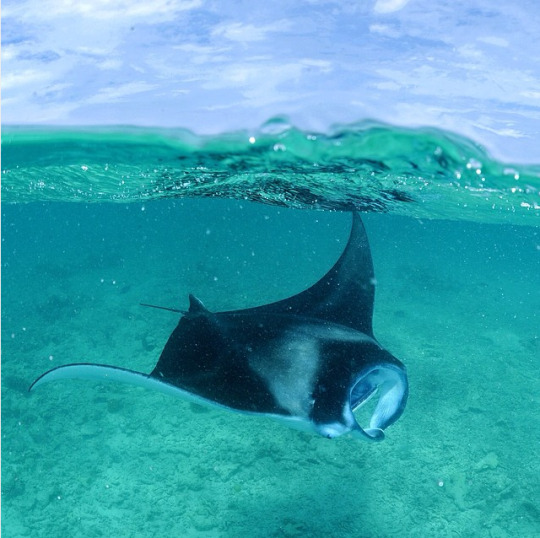

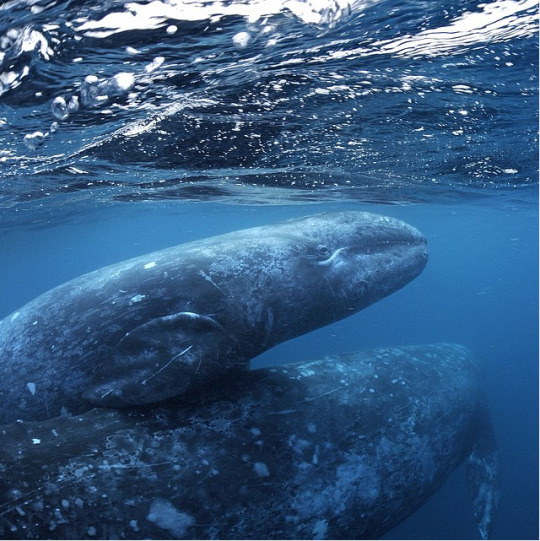
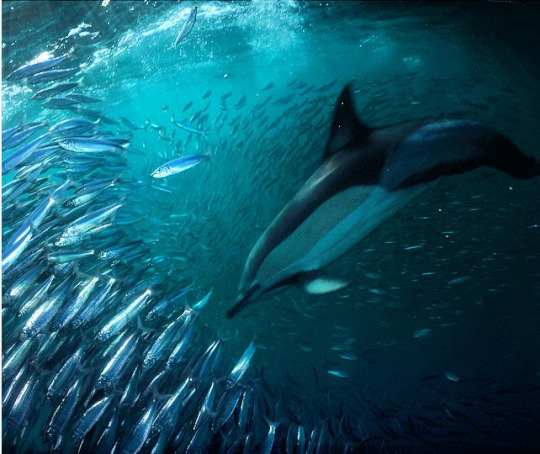

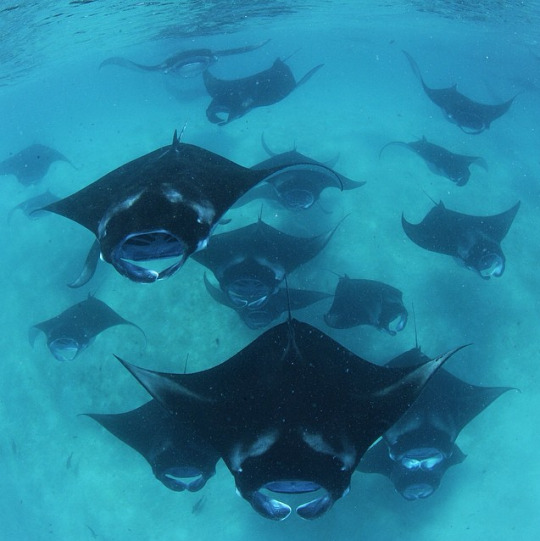

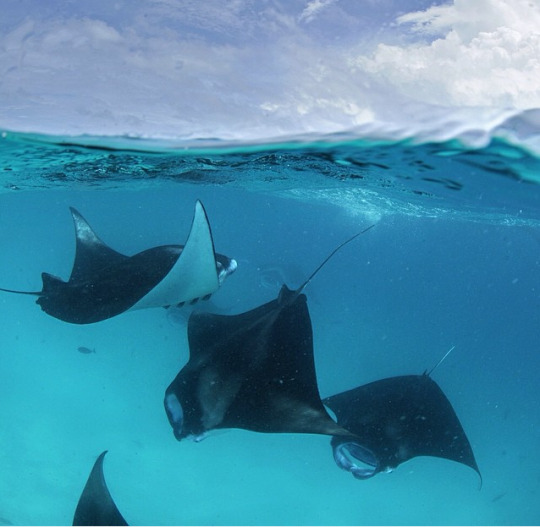

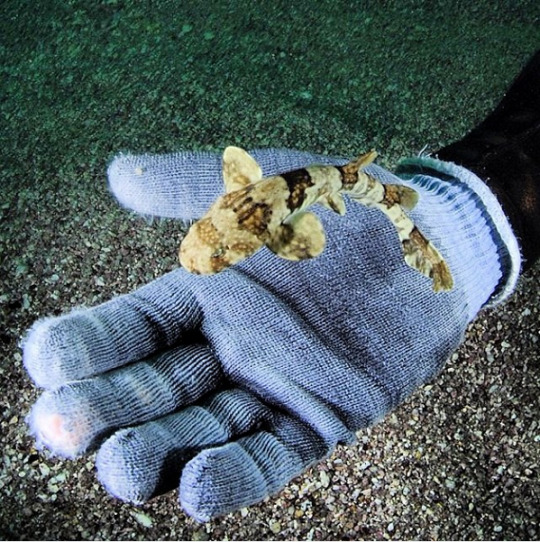
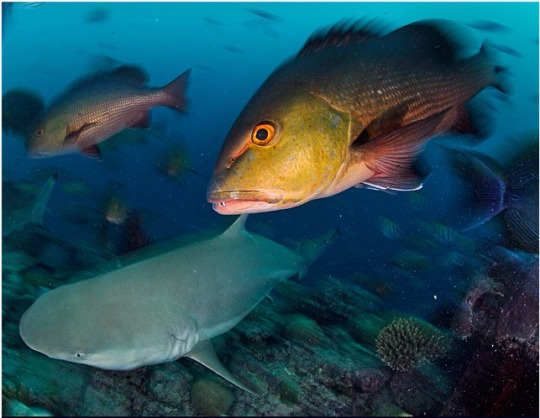
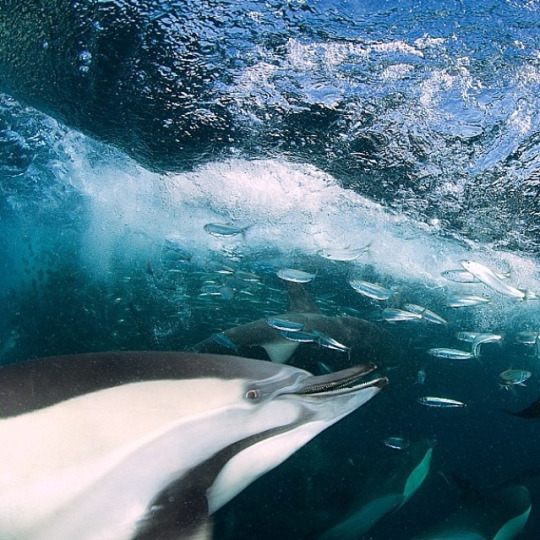
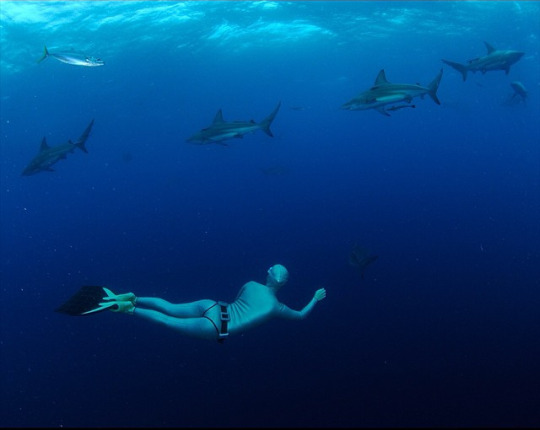

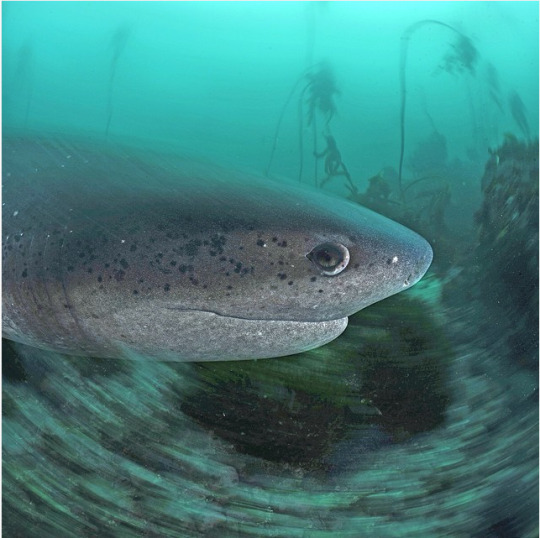
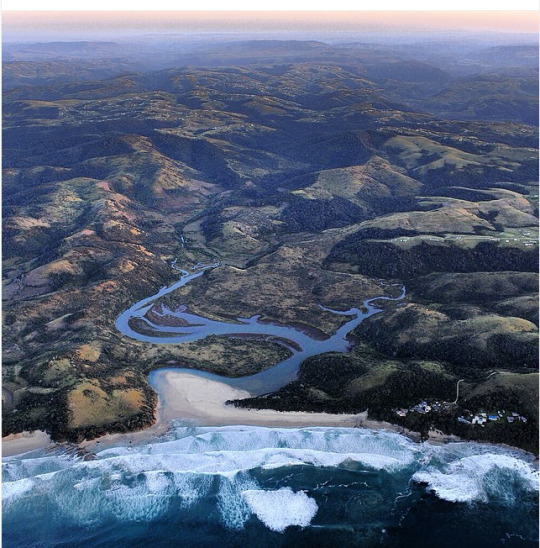

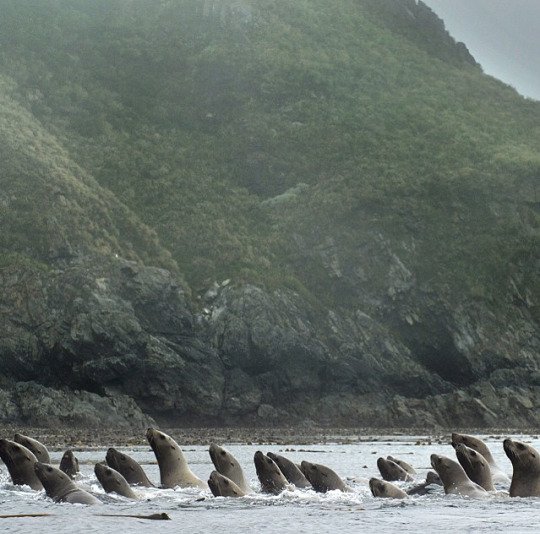

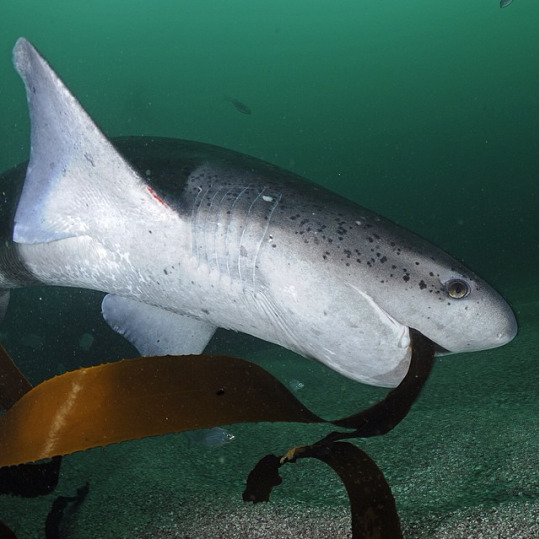
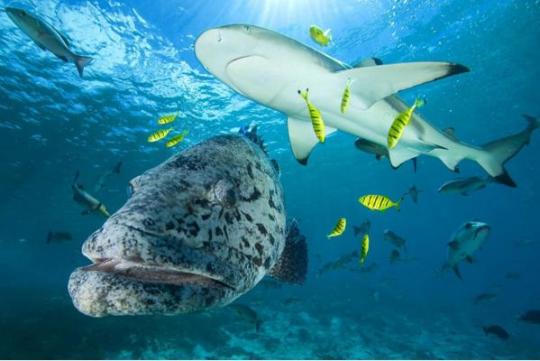



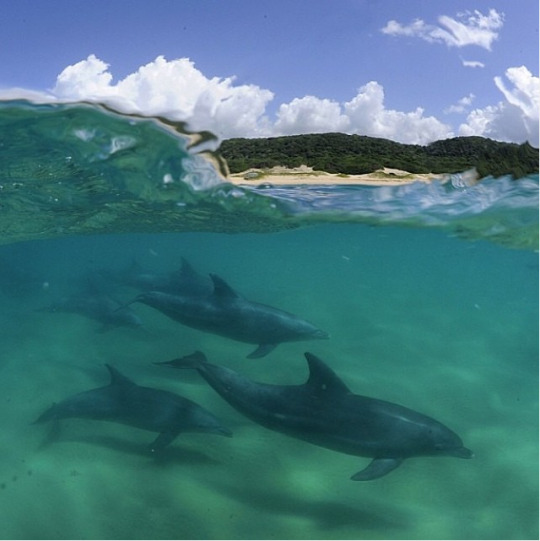


Photos and text: @thomaspeschak
1-. A blacktip reef shark navigates a narrow canyon off Aldabra Atoll. Seychelles
2-. Every winter sub-adult whale shark gather in the seas off Djibouti
3-. Hanifaru Bay in the Maldives
4-. I had been watching these seals for years & wanted to photograph them surfing a unique underwater perspective on southern African marine reserves
5-. In Mexico's San Ignacio lagoon a gray whale mother pushes it's young calf to the surface so it can get a better look at the photographer
6-. June-July is sardine run time off South Africa's East Coast. Long-beaked common dolphins are the only predators that hunt cooperatively
7-. Kira is a black labrator that loves swimming with dolphins
8-. Manta rays. Hanifaru Bay in the Maldives
9-. Mantas feeding amongst baifsish. Hanifaru Bay
10-. Reef mantas feeding at Hanifaru Marine Reserve
11-. My fascination with seahorses began more than 10 years ago when I still was a graduate student in marine biology
12-. Not all sharks look like Jaws. An endemic Puffader shy shark hovers above dive guide hand
13-. Sharks, Bohar snapper and other predatory fish are abundant on the fringing coral reefs of the seas around D'Arros Island and St. Joseph Atoll, Seychelles
14-. Long beaked common dolphin hunting sardines off South Africa's Wild Coast
15-. South African free diver @hanlinprinsloo diving with blacktip sharks in the Aliwal Shoal Marine Protected Area
16-. y 17-. South Africa's Table Mountain Marine Protected Area host a unique sevengil shark aggregation site wich draws divers from all over the world
18-. South Africa's Wild Coast is a mosaic of river mouths, grassy hillsides and formidable sea cliffs
19-. Aerial perspective of the sanctuary zone of the Ponta do Ouro Marine Reserve, Mozambique
20-. Steller's sea lions ar common off Canada's British Colomia coast where populations of their preferred prey such a sand lance and herring are still relatively abundant
21-. Sunflower sea stars are the largest shallow water starfish in the world
22-. The broadnosed sevengill shark is a top predator in South Africa's kelp forests. With saw shaped teeth akin to tiger sharks, they hunt fish and scavenge dead fur seals
23-. The seas around Aldabra atoll are some of the most pristine in the Seychelles and the entire western Indian Ocean
24-. The tail belongs to one of the top predators in South Africa's kelp forest
25-. This green turtle traverses the unbelievably blue waters of Europa Atoll in search of a mate
26-. To survive in the vastness of the open ocean, Silky sharks rely on their boldness and curiosity to investigate every opportunity that might yield a meal
27-. y 28-. This pod of Indo-Pacific Bottlenose dolphins regularly crosses from Mozambican into South African waters
9 notes
·
View notes
Text
About Timor Sea, facts and maps

Timor Sea, arm of the Indian Ocean, lying southeast of the island of Timor, Indonesia, and northwest of Australia. Located at latitude 10° S and influenced alternately by the southeast trade winds and the monsoon belt, the area is well known for generating typhoons.
The Timor Sea was the location for Australia's largest oil spill when the Montara oil field leaked oil, natural gas and condensate from 21 August to 3 November 2009. During the spill 400 barrels (64 m3) of oil leaked each day. East Timor is enclosed on the south by the rough waters of the Timor Sea (part of the Indian Ocean) and on the north by the calmer Banda Sea of the Pacific Ocean.
The Timor Sea (Indonesian: Laut Timor, Portuguese: Mar de Timor, Tetum: Tasi Mane or Tasi Timór) is a relatively shallow sea bounded to the north by the island of Timor, to the east by the Arafura Sea, and to the south by Australia.
The sea contains a number of reefs, uninhabited islands and significant hydrocarbon reserves. International disputes emerged after the reserves were discovered resulting in the signing of the Timor Sea Treaty.
The Timor Sea was hit by the worst oil spill for 25 years in 2009. It is possible that Australia's first inhabitants crossed the Timor Sea from the Malay Archipelago at a time when sea levels were lower.
The waters to the east are known as the Arafura Sea. The Timor Sea is adjacent to three substantial inlets on the north Australian coast, the Joseph Bonaparte Gulf, Beagle Gulf and the Van Diemen Gulf. The Australian city of Darwin which is located in part on the shore of the Beagle Gulf, is the nearest large city to the sea. The small town of Wyndham is located on the west arm of Cambridge Gulf, an inlet of Joseph Bonaparte Gulf.
Rivers that enter the Timor Sea from the Northern Territory include Fish River, King River, Dry River, Victoria River and the Alligator Rivers. Rivers in the Kimberley region that flow into the Timor Sea include the Ord River, Forrest River, Pentecost River and Durack River.
The sea is about 480 km (300 mi) wide, covering an area of about 610 thousand km2 (240,000 sq mi). Its deepest point is the Timor Trough (which some geologists consider is the south-eastern extension of the Java Trench, but others view as a foreland trough to the Timor Island "mountain range"), located in the northern part of the sea, which reaches a depth of 3,300 m (10,800 ft). The remainder of the sea is much shallower, much of it averaging less than 200 m (660 ft) deep, as it overlies the Sahul Shelf, part of the Australian continental shelf.
The Big Bank Shoals is an area on the sloping seabed between the continental shelf and the Timor Trough where a number of submerged banks are located. The ecosystem of the shoals differs significantly from the deeper waters surrounding them. In May 2010, it was announced that a crater about 50 km (31 mi) wide has been discovered on the seabed of the Timor Sea.
The International Hydrographic Organization (IHO) defines the Timor Sea as being one of the waters of the East Indian Archipelago. The IHO defines its limits as follows:
On the North The Southeastern limit of the Savu Sea the Southeastern coast of Timor and the Southern limit of the Banda Sea .
On the East. The Western of the Arafura Sea .
On the South. The North coast of Australia from Cape Don to Cape Londonderry (13°47′S 126°55′E).
On the West. A line from Cape Londonderry to the Southwest point of Roti Island (10°56′S 122°48′E).

Timor Sea Treaty
The Timor Sea Treaty, which was signed on the 20 May 2002, led to the establishment of the Timor Sea Designated Authority (TSDA). This organisation is responsible for the administration of all petroleum-related activities in a part of the Timor Sea known as the Joint Petroleum Development Area (JPDA). The treaty was ratified in February 2007.
Under the terms of the treaty, royalties on petroleum production in the JPDA are split in a 90:10 ratio between East Timor and Australia. It has been criticised because the treaty did not finalise the maritime boundary between East Timor and Australia.
2018 Maritime Boundaries Treaty
The Australia–Timor Leste Treaty Establishing Their Maritime Boundaries in the Timor Sea was signed on 6 March 2018 at United Nations headquarters in New York in the presence of United Nations Secretary-General Antonio Guterres.
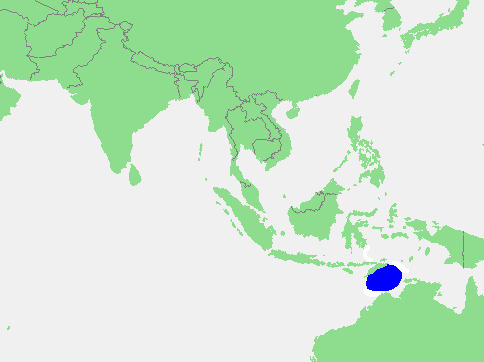
Is Timor its own country?
The United States recognized Timor-Leste, then known as East Timor, on May 20, 2002, when it achieved formal independence. Before this time, the region had been a Portuguese colony up until 1975 and was under Indonesian sovereignty from 1976 to 1999. The Island of Timor is currently divided in two parts: the West is part of the Republic of Indonesia with provincial capital in Kupang; while the East, whose capital is Dili since its independence, had been a Portuguese territory since the 16th century.
Are there sharks in the Timor Sea?
Points of interest. Large giant clam (~1 meter), black tipped reef sharks, turtles.
Is East Timor Islamic?
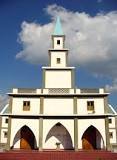
The majority of the population of East Timor is Christian, and the Catholic Church is the dominant religious institution, although it is not formally the state religion. There are also small Protestant and Sunni Muslim communities.
Is Timor a rich country?
Timor-Leste remains one of the poorest countries in East Asia and is heavily dependent on foreign aid. Economic liberalization has largely stalled. Oil and gas account for more than 95 percent of government revenue, which is consigned to a Petroleum Fund that had assets of $19.5 billion at the end of June 2021.
Is Timor a poor country?
The world's newest nation - East Timor - is also Asia's poorest, according to a new report released by the United Nations Development Programme (UNDP). The world's newest nation - East Timor - is also Asia's poorest, according to a new report released by the United Nations Development Programme (UNDP).
What is the most violent sea in the world?
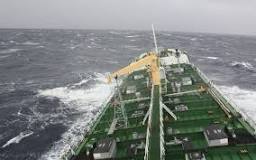
Sailing through the Indian Ocean has come to be a challenging task owing to its characteristic of being one of the most deadly ocean waters in the world.
What is the deadliest ocean in the world?
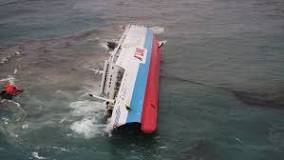
The South China Sea and East Indies, eastern Mediterranean, Black Sea, North Sea, and British Isles are the most dangerous seas in the world, with the greatest number of shipping accidents in the last 15 years, according to a report released by the World Wildlife Fund (WWF).
Which is the roughest sea in the world?
From the tip of the South American continent to the northernmost shores of Antarctica: here's where you'll find the reputed roughest sea-passage in the world.
Is Timor safe to travel?
Crime risks increase at night, and if you're travelling alone. Smash-and-grab property theft from vehicles happens. Intruders have broken into homes where foreigners are known to be. There is a history of gang-related violence, robbery, arson and vandalism in major towns, especially Dili.
Which country controlled Timor?

The British governed the island in 1812–15. The Dutch and the Portuguese fought for supremacy over Timor, and Portuguese sovereignty over the island's eastern half was settled by treaties in 1860 and 1893, although the latter became effective only in 1914. Japanese forces occupied Timor during World War II.
Why is Timor called Timor-Leste?

Etymology. "Timor" is derived from timur, meaning 'east' in Malay, thus resulting in a tautological place name meaning 'East East'. In Indonesian, this results in the name Timor Timur. In Portuguese, the country is called Timor-Leste (Leste meaning 'east'; Portuguese pronunciation: ).
Beneath the Timor Sea lie considerable reserves of oil and gas. Confirmation of the prospectivity of the Timor Sea came when Woodside-Burmah's Big John rig drilled Troubadour No. 1 well in June 1974 on the Troubadour Shoals about 200 kilometres (120 mi) southeast of Timor, and intersected 83 metres (272 ft) of hydrocarbons. A number of offshore petroleum projects are in operation and there is considerable exploration activity either underway and numerous proposed projects. A gas pipeline crosses the Timor Sea from the Joint Petroleum Development Area to Wickham Point near Darwin.
The Timor Sea was the location for Australia's largest oil spill when the Montara oil field leaked oil, natural gas and condensate from 21 August to 3 November 2009. During the spill 400 barrels (64 m3) of oil leaked each day. The Montara Commission of Inquiry placed blame on the Thai company PTTEP, owner of the wells.
Read the full article
#AretheresharksintheTimorSea?#CanyouswimintheTimorSea?#DoesPortugalOwnTimor?#DoestheTimorSeagettsunamis?#HowbigistheTimorSea?#HowdeepistheTimorSea?#IsEastTimorIslamic?#IsitTimorSea?#IstheTimorSeacold?#IstheTimorSearough?#IstheTimorSeawarm?#IsTimorapoorcountry?#IsTimorarichcountry?#WhatishappeningintheTimorSea?#WhatisspecialabouttheTimorSea?#WhatisspecialaboutTimorSea?#Whatisthedeadliestoceanintheworld?#Whatisthemostviolentseaintheworld?#WhatistheTimorSeacalled?#WhatisTimorSeafamousfor?#WhatlivesintheTimorSea?#whereisTimorSea?#WherewastheTimorSea?#WhonamedtheTimorSea?#WhoownstheTimorSea?#WhoownsTimor?#WhyisitcalledTimorSea?#WhyisTimorcalledTimor-Leste?
0 notes
Text
Kenya's unmissable experiences

Overview
Despite having a coastline of beautiful beaches perfect for lazing. Kenya rarely inspires visitors to sit still – there are simply too many exciting things to experience. Stirring landscapes, ranging from equatorial glaciers and jagged peaks to wildlife-laden. Plains and tropical reefs, provide an epic natural playground for all who venture here, while the many intoxicating cultures surprise at each and every turn.
Big Five safaris
Not only were safaris born in Kenya, but so was the very word itself – it means ‘journey’ in Swahili. Spotting the much-heralded Big Five (lion, leopard, buffalo, rhino and elephant) is a major aspiration of many visitors to Africa, and as one would suspect, Kenya provides some of the continent’s most impressive natural venues for it. None of which is more famous than the Masai Mara, where sightings of all these species is common. Lake Nakuru National Park, with its flamingo-lined lake and forest-clad escarpments, is another incredible place for. Big Five safaris, as is Amboseli National Park, where Mt Kilimanjaro provides a staggering backdrop. Samburu Game Reserve in the remote north is prime safari territory too, and also. Hosts its own ‘Samburu Big Five’: Beisa onyx, Grevy’s zebra, long-necked gerenuk, reticulated giraffe and Somali ostrich.
Lake Nakuru National Park
4-Day Maasai Mara Game-Lake Nakuru Park Safari
2 Day – Lake Nakuru & Naivasha
Hiking
Mt Kenya’s trekking terrain is arguably the continent’s most beautiful and rewarding. Its diverse valleys, equatorial glaciers and dramatic, towering summit are extraordinary sights, and best seen over a challenging multi-day hike to. Point Lenana (4985m), the mountain’s third-highest peak (and highest reachable without climbing equipment). The more gentle slopes of Mt Elgon, which are home to elephants, primates, antelopes and some 240 species of birds, are another great option for treks lasting several days, as are captivating walks with the Maasai through their homelands. Incredible day hikes are also possible throughout the country: climb up Mt Longonot to its crater rim; seek out remote waterfalls in the mountains of Aberdare National Park; or take a more leisurely stroll within the dense Kagamega Forest while listening to birdsong.
4-Day Lake Naivasha-Lake Nakuru/Maasai Mara Game Reserve
The Great Migration
It’s been called the greatest natural spectacle on the planet, and for good reason – each year from July to October,.Hundreds of thousands of wildebeest and zebra make a dramatic crossing of the crocodile-infested Mara River to feed on the lush grasses of the Masai Mara. The flood of animals filling the open savannah includes herds of elephants and giraffes, and trailing this sea of prey are lions, leopards, cheetahs and hyenas. Needless to say, there is never a shortage of drama during the great migration.
Mountain biking
Mountain biking is not just mountain biking in Kenya – here this two-wheeled pursuit offers. A unique means of embracing both the country’s incredible landscapes and its iconic wildlife. Ride over the red earth paths in the volcanic confines of Hell’s Gate National Park, cycling past grazing buffaloes, giraffes. Impalas and zebras, or take to the grasslands of the Masai Mara for a cycle safari like no other – the sense of engagement with the wildlife is amplified to no end when in the saddle. Of course, for the purest mountain bikers who want nothing more than to test their skills, there are some great single track routes of varying gradient and difficulty on Mt Kenya and within the Rift Valley above Naivasha. For those wanting a more leisurely cycle, exploring the coastal areas around Diani Beach, Malindi and Watamu by bike is an engaging option too.
Cultural encounters
Although it is dreams of Kenya’s wondrous wildlife that draws most people to this East African nation. Many people’s lasting memories revolve around their interactions with Kenyans themselves. The Maasai people, with their traditional red shukas, brilliant smiles and overwhelming presence, add a depth of warmth to any trip into the Mara region.
The same can be said for the striking Turkana people in Loyangalani along the eastern shore of the Jade Sea (Lake Turkana). Visitors to the Marsabit-Lake Turkana Festival in early. May also meet many of the other enigmatic and colourful tribes from the Kenya’s remote north, such as the El Molo, Rendille, Samburu, Dassanatch, Gabra, Borana, Konso, Sakuye, Garee, Waata, Burji and Somali. The diversity of cultures in Kenya is truly astounding. While the Swahili people on the coast differ in that they don’t share a common heritage. They are bound by a language and an African history that is tied to Arabia and Persia – there is no better place to immerse yourself in this world than in the labyrinth of crooked alleyways in Lamu.
Dhow trips
Kenya’s Indian Ocean coast is beautiful no matter how you look at it. But there is no more romantic way to experience it than from the deck of a traditional dhow. These wooden sailing vessels have been used along this stretch of coastline for centuries, and they are still entrenched in the Swahili culture today. Whether launching from the historical island of. Lamu (home to Kenya’s oldest continually inhabited town) or the modern resort village of Diani Beach, these wind-powered voyages will slip past stunning slivers of sand. Remote coral islands and reefs teeming with fish.
Water sports
Want a burst of adrenaline with your taste of the Indian Ocean? The same winds that power the elegant dhows fuels two great water sports: windsurfing and kitesurfing (also known as kiteboarding). The latter has caught on massively in Kenya, with many schools now providing lessons for beginners as well as equipment rentals for people with experience. Diani Beach is the epicentre of action, though the waters off Watamu are also highly recommended. The fun doesn’t stop inland, however, with whitewater rafting trips possible on both the Tana and Athi rivers, which thunder down from the Central Highlands at certain points during the year.
Hot air ballooning
Perhaps the most intoxicating safari experience in Kenya is to slowly climb. One exciting flame blast at a time – above the famous rolling savannah and flat-topped acacia trees of the Masai Mara in a hot air balloon. Floating silently over streams of wildebeest on their great migration. Lions stalking their prey or a lone black rhino moving through the bush is a perspective that nobody can ever forget. When the light is just right it’s possible to marvel at the perfectly proportioned. Elephant-shaped shadows cast by the largest member of the Big Five. Few experiences in life are as peaceful as they are exciting, and a balloon safari here is certainly one of them.
3 Day – Amboseli Wildlife Safari
Diving and snorkelling
With much of the coast sheltered by reefs, Kenya’s calm inshore waters – speckled with shoals of vibrantly coloured fish. Provide some of the easiest and most transfixing snorkelling in East Africa. Simply float above the seabed five metres below and take it all in. Or strap on a tank and take a deeper dip on the other side of the reef, where whale sharks, dolphins and swordfish play. For those wanting to up their diving skills there are some highly regarded operations that offer open water diving courses. For beginners, Kenya is also a great place to get your toes wet – there are schools in Diani Beach. Malindi and Wasini Island that teach .PADI (Professional Association of Diving Instructors) courses, which start in shore-based pools beneath swaying palms.
Camel safaris
These unique safaris are a wonderful way of mixing wildlife, culture, landscapes and adventure by getting into remote areas. Where few others (and often no vehicles) go. Most operate in the northern tribal areas of the Samburu and Turkana. Which means visitors will also witness nomadic life and mingle with local people. Wildlife is not as prolific as in the southern parks, but on these trips it does not matter – the journey is the main attraction. Mornings are spent on the move, with visitors either riding the camels or walking alongside them (whichever they prefer). After striking camp around noon, participants have the rest of the day to enjoy guided walks and cultural interactions or to just relax. Experienced Samburu moran (warriors) usually lead the caravans. With English-speaking tribal guides on hand to dispense interesting details on local folklore, botany, ornithology and local customs.
See also:Amboseli National Park Destination Guide, Wildebeest Migration Masai Mara, Masai mara National Reserve and Conservancies, The Top Safaris in KenyaTop Weekend Getaway Deals in Kenya
If you think you have to travel far to enjoy a nice weekend, you may never get away. Besides, you can enjoy a beautiful weekend right here in Kenya. There are countless wallet-friendly Kenyan weekend getaways that won’t even break your budget. Don’t spend your weekend, doing absolutely nothing at home. Whether you are looking for romantic destinations, pristine beaches, and adventurous outdoor activities, there are plenty wallet-friendly getaways that will satisfy your weekend desires.
Mombasa South Coast Self Drive Deals
Lake Nakuru & Elementaita Self Drive Deals
Lukenya & Machakos Self Drive
Amboseli and Tsavo Holiday Self Drive Deals
Mt. Kenya & Aberdare Self Drive Holiday Deals
Mombasa North Coast Self Drive Deals
Samburu Holiday Self Drive Deals
Masai Mara Self Drive Holiday Packages
Malindi & Watamu Self Drive Deals
Nyahururu & Laikipia Holiday Self Drive Deals
Top Madaraka Express SGR Holiday Deals
2 Nights Malindi & Watamu holiday with SGR
2 Nights Amboseli Holiday With SGR
2 Nights Tsavo Holiday With SGR Sa
2 Nights Voi Holiday With SGR
2 Nights Mombasa North Coast With SGR
2 Nights Mombasa South Coast With SGR
Read the full article
0 notes
Text
KINNAUR KALPA SANGLA TOUR PACKAGES
Sangla-One of the most beautiful villages of Kinnaur District, with the beautiful and the gorgeous Baspa River flowing through it. It also has a village of the same name.
Places to visit in Sangla:
Baspa River-Shoals of trout, swimming in the pristine and sparkling waters of the Baspa river is a must go for anglers and fish lovers alike. On the banks of the river, can be seen dense forests of pine and oak trees which leaves tourists spellbound.
Kamru Fort-Have a glimpse of the 800-year-old history by visiting the Kamru fort, located at merely 2 km from Sangla valley. On entering the fort, you are welcomed by a stunning image of Lord Buddha at the main entrance. Beautiful woodworks adorn the temple of Kamakhya Devi inside, whose idol is said to have been brought from Guwahati in Assam, hence the name.
Tibetan Wood Carving Centre provides you a chance to see the beautiful wood carvings that work in Tibetan style. Various wooden items are here on display for tourists, to buy as souvenirs to take back home.
Chitkul Village-At a distance of just 25 km from Sangla, Chtikul is the last Indian village near the Tibetan Border. Reserve a day to enjoy the beauty of the tiny village and surrounding attractions. You can also camp near the village and enjoy the view of apple orchards on the banks of the Baspa River.
Bering Nag Temple/ZanghuNagas Temple-Dedicated to Lord Jagas (Lord Shiva), numerous tourists visit this temple between Aug-Sep to attend the famous Fulaich Fair”.It is a revered site for the local inhabitants, who consider Lord Jagas to be their protector and guardian.
Rupin Pass-Considered one of the best Himalayan treks, Rupin Pass at a height of 15250 ft is a must go for trekking lovers. With the RupinRiver as the main attraction,RupinPass showcases gurgling streams, waterfalls that seem to be descending from heaven, beautiful meadows, and a variety of wildflowers.
As you trek through the region you will be able to fathom, what an area without the touch of commercialization looks in its natural form.
Rakcham- The second last Indian village (before Chitkul) from the Tibetan border,it would be not an exaggeration to call it as “heaven on earth”.Dotted with beautiful apple orchards, snow-covered peaks plus lush green landscapes, it's a must-visit for nature lovers.
Kalpa- The main village of Kinnaur district sitting on the banks of the Sutlej river is a must go for tourists. Apple orchards, beautiful temples, monasteries, the rich flora, and fauna will give you a memory to cherish forever. Witnessing the sunrise of the surrounding peaks is a sight to behold. Local eateries are not available, so it is advisable to carry some light snacks with you in case you feel the pang of hunger. The winters are freezing, so don’t forget to carry woolens for safety if you are visiting them.
ReckongPeo-It is a small town, which is the District Headquarters of Kinnaur. It is the main market town where tourists can experience and buy local products as souvenirs. From ReckongPeo, at a distance of merely 2 km is the Kinnaur Kailash Mountain, considered sacred by both the Hindus and Buddhists alike. You will be mesmerized by the beauty of the mountain peak as it changes color with the passing rays of the sun.
Lahaul&Spiti Valley-Regarding Lahaul and Spiti, Rudyard Kipling said-“Surely the Gods must live here, this is no place for men”. Spiti means "the middle land", the land between India and Tibet.
Step into the pages of time, with a visit to the 1000-year-old Triloknath Temple dedicated to Lord Shiva. The picturesque landscape &snow-covered peaks offer a view to remember.
Kaza- Merely 5.5 Km from Spiti; lies Kaza, headquarter of the Spiti Sub-District. Here you can visit
i) Tnayud Monastery, KominVillage-world’s highest monastery.
ii) Langza Village-One of the world's highest village with motorable road
iii) Hikkim Village-famous for the highest Post Office in the world. Don’t forget to post a postcard from there.
Rohtang Pass-Situated in the PirPanjal Range, Rohtang Pass at a distance of 30km from Spiti valley, it is a must-visit for every tourist. Rohtang means “land of corpses", due to the large no of people who have died trying to cross it earlier.
Rohtang is famous for its scenic beauty and strategic importance to India, as it serves as an entrance to Ladakh. The best time to visit is between May-Oct.
Chandertaal Lake-Located at a height of 14100 feet, Chandertaal Lake is a beauty to be mesmerized from. This crescent-shaped lake, surrounded by the majestic Himalayas, can only be visited during June-September. The rest of the year, the lake remains frozen.
Pin Valley- A beautiful valley in the Lahaul and Spiti District, it’s a view to die for. The ecosystem of the valley amazes the viewer, as it is starkly different that the rest of the Spiti valley. The Pin River flows through the valley with carpets of greenery on either side. The snow-capped mountain, gushing river, sunny weather, and strong winds give an experience you will cherish forever. Pin valley also contains a National park with a variety of flora and fauna to look forward to.
Given the variety of options available, sometimes you can be confused about which areas to visit and which areas to leave. Time is a major factor because your holiday plan must be time-bound. To make the best of the situation our company provides a host of packages for family, group or honeymoon tour-
1. SPITI TOUR PACKAGES-To explore the beauty of the Lahaul & Spiti valley, our agency offers a 6 Nights/7 Days package covering:
Kaza => Pin Valley => Tabo => Kee Monastery => Kibber => Langza => Komic => Hikkim => Chandertal Lake
2. SANGLA TOUR PACKAGE-9 Night/10 Days package Sarahan => Sangla => Chitkul => Kalpa => Nako => Tabo => Kaza => Kee Monastery => Kibber => Komic => Langza => Chandertaal Lake
3. SPITI VALLEY PACKAGES-6 Nights/7 Days package covering:
Kaza => Pin Valley => Tabo => Kee Monastery => Kibber => Langza => Komic => Hikkim => Chandertal Lake
4. KINNAUR SPITI VALLEY TOUR FROM CHANDIGARH- If you plan to start from Chandigarh, we have a 9 Nights/10 Day’s tour package covering
Sarahan => Sangla => Kalpa => Nako => Tabo => Kaza => Shimla
5. KINNAUR KAZA TOUR FROM CHANDIGARH- 9 Night/10 Days Sarahan => Sangla => Chitkul => Kalpa => Nako => Tabo => Kaza => Kee Monastery => Kibber => Komic => Langza => Chandertaal Lake
6. KINNAUR TOUR PACKAGE- 4 Nights/5 Day’s package
Kinnaur => Sangl => Chitkul => Rakcham => Reckong Peo => Kalpa
7. KULLU MANALI AND SHIMLA TOUR PACKAGE-6 Nights/7 Day’s package
Shimla => Kufri => Fag => Mashobra => Kullu => Manali => Manikaran => Rohtang Pass => Chandigarh
8. SHIMLA TOUR PACKAGE-9 Nights /10 Days package
Shimla => Kufri => Fagu => Kullu => Manali => Rohtang Pass => Kangra => Dharamshala => Mcleodganj => Dalhousi => Khajjiar
#KINNAUR KALPA SANGLA TOUR PACKAGES#KALPA KINNAUR PACKAGE TOUR#KINNAUR KALPA SANGLA TOUR#KINNAUR KALPA SANGLA TOUR PACKAGE#SANGLA KALPA TOUR
0 notes
Photo




Muscle Shoals NHA Partners with Sacred Way Sanctuary to Help Preserve Native History
FLORENCE, AL. (August 28) - In March of 2017, the Muscle Shoals National Heritage Area (MSNHA) entered into a partnership with Sacred Way Sanctuary to help portray an accurate story of Native American culture in northwest Alabama. Beginning in October, the Sanctuary will open an Interpretive Center and Museum to the public, operating as an arm of the MSNHA to uphold its commitment to preserving Native heritage in the region.
Founded by Dr. Yvette and Sean Collin, Sacred Way Sanctuary is an educational and research facility dedicated to preserving the Native American Horse and other animals that were held sacred to the Indigenous Peoples of the Americas, as well as protecting related sacred sites and ceremonies.
Roughly a third of the horses at the Sanctuary originate from southeastern tribes, including the Choctaw, Cherokee and Chickasaw. The sanctuary is also home to horses from the Lakota, Nakota, Cheyenne, Mayan, Kiowa, Apache, Ojibwe, Mohawk, Ute, and Pueblo tribes.
The Sanctuary works with caretakers across the country to raise and preserve the horses on land that was part of the 1806 Congressional Reservation—the first federal Indian reservation in the U.S. Several herds of native horses, including stallions, mares, yearlings, and weanlings live on the grounds.
Following the Sacred Way Sanctuary Interpretive Center (SWSIC) opening, the MSNHA and Sacred Way plan to partner on educational events and programs, such as sponsoring Native American speakers and other community activities that help preserve native history and culture. The museum will also host drumming and traditional singing events, as well as language camps in the summers for families who wish to connect more deeply to their native heritage.
The SWSIC will be one of three interpretive centers called for by the MSNHA management plan to interpret each of the heritage area’s three themes: the Tennessee River, music and Native American Heritage.
Dr. Yvette Running Horse Collin also assumes the role of Native American consultant for the MSNHA. Collin focuses on outreach to schools and civic organizations throughout the heritage area’s six-county region and the development of educational programming for the interpretive center. In addition, she educates communities about Tuscumbia Landing, a significant site on the Trail of Tears, and represents MSNHA’s Native American heritage at local, national and international events.
More details about Collin’s work and the Sacred Way Sanctuary can be found on the website.
Learn more about Muscle Shoals National Heritage Area projects.
#Muscle Shoals National Heritage Area#National Heritage Areas Program#NPS#Native American Heritage#Native Horses#Sacred Way Sanctuary#Tuscumbia Landing#Trail of Tears
3 notes
·
View notes
Text
Environmental Implications of Mining of Beach Placers for Heavy Minerals- Juniper Publishers
Abstract
With the increasing demand for clean energy in emerging economies like India, the requirement for Rare Earth Elements (REE) along with thorium is getting enhanced. In such a situation an indigenous resource of these are important. The easy extraction of these elements from beach placers has attracted considerable interest. However, mining in beach areas can have a detrimental impact, if suitable measures are not undertaken. The impact of mining of heavy minerals, primarily by dredging, along the east coast of India is discussed.
Keywords: Heavy minerals; Rare earth metals; Monazites; Erosion; Beach placers
Go to
Introduction
The peninsular India is bounded on three sides by water and one side by land. It has a long coastal tract of 7,517km. The sedimentary deposit present along this vast coast is an important setting for mineral deposits. The placer deposit of the state of Kerala and Odisha is a major source of heavy mineral deposits [1]. The mining and processing of heavy minerals from beach sands in coastal areas like in India entails specifically those associated with beach erosion, receding of the shore lines and the environmental impact.
The case study is typically the Odisha- Andhra Pradesh Coastal Placers [2], covering more than 400km which are enriched in minerals like Monazite, Zircons and Xenotime. These placers are beneficial for the extraction of Rare Earth Elements (REE), apart from ilmenite and rutile for various applications including sensors and smart phones respectively [3]. The Indian Rare Earths Limited has recently signed a joint venture agreement with Toyota Tshusho Corporation to supply Monazites to Japan for extraction of Rare-Earths, primarily the Light Rare Earth metals [4]. Considering these aspects the mining of these heavy mineral beach placers of East Coast of India is not only a lucrative project, but also important to strengthen the strategic mineral reserve of the country. REE's with its various uses in green technology and electronics like wind turbines and Neodymium magnets respectively is quickly acquiring the position of strategic minerals if not officially then certainly in its usefulness [3].
Go to
Discussion
Extensive studies undertaken [5] indicate that mining of beach sands using dredging operations affect the fragile coastal dunes as well as the sand bars/shoal, which leads to further receding shorelines. The study area mostly has high energy waves which result in constant washing away of sediments thus creating an unbalanced situation, in such condition dredging of dunes and berms can aggravate the condition of erosion, thus creating a condition of imbalance between erosion and accumulation of sedments. The constant disturbance of palaeo- dunes disturbs the natural barrier which helped in creating a hindrance for beach erosion. The area also experiences major storm surges every year which further aggravate the disproportion of sedimentary condition of the area.
The area around Rushikulya river mouth also comprises of the Oliver ridley turtle nesting grounds in Odisha [6] as well as the horseshoe crab habitats. Both these organisms are rare and extremely susceptible to the changes of the environment of its nesting. The organisms primarily depend upon the size of the particles over which they lay their eggs. The horse shoe crabs favours sediment sizes ranging between 2.8-2.46phi, any change in this range and they shift their nesting ground [7]. The turtles also show a similar breeding pattern, Figure 1 shows their nesting areas. Apparently the constant mining and dredging activities disturbs the sediment size distribution, hence disrupting their normal turtle nesting environment. This results in further decrease in the number of these rare marine species.
The receding coastline can be averted with the help of plantation of vegetation which are capable of acting as effective barrier for storm surges and the high energy beach environment[8]. These transplantations is undertaken to restore soil micro fauna to the disturbed beach deposits. Dune vegetation is effected by geology of the area, and has more than 163 species of flora in east coast itself. The constant anthropogenic activity poses a threat to the local vegetation resulting in changing landforms. The coastal vegetation is a potential agent which holds the soil together and prevents the retreat of shore line. In general, due attention needs to be paid to have optimal similarity between post-mining and pre-mining flora, thereby limiting any comprehensible decline in natural/indigenous plant species [9].
India has one of the largest Thorium reserves of the world [10]. The east coast placer of India contains along with heavy minerals radioactive elements mostly Uranium, Thorium and Potassium also. Of these they have a pretty high concentration of 232Th. A quantitative estimation of concentration of thorium is present for areas close to Gopalpur and the Rushikulya river mouth (Figure 1). For areas close to Gopalpur, namely the Garampeta and Markandi beach area, the thorium concentration ranges between 394-4521 with a mean of 2489Bq kg-1 [11]. Close to the Rushikulya river mouth the concentration of Thorium varies from 40- 5740Bq kg-1 and on an average 1670Bq kg-1 [12]. It has also been shown that Monazite, a Rare Earth Phosphate tends to get preferentially enhanced in airborne dust being softer than the titanium and zirconium bearing minerals [13]. The focus of our discussion will now shift from the effects of man made activities on the environment to the effect of the ambient environment on the human health due to change in NORM. The workers working in the mines to extract various heavy minerals are in constant contact of radioactive elements primarily through inhalation. The only way to cope with such an incident is to put a limit upto which a mine worker can be exposed to radioactivity, In Australia that limit is >1mSv a-1 [4].
Go to
Conclusion
Typical remediation methodology to be adopted should be preferably based on mobile mining which will help in subsequent decrease of mining foot print and plantation of local and indigenous species.
To Know More About Journal of Oceanography Please Click on: https://juniperpublishers.com/ofoaj/index.php
To Know More About Open Access Journals Publishers Please Click on: Juniper Publishers
0 notes
Link
"March in Native American History
by Phil Konstantin
Copyright © Phil Konstantin (1996-2013)
March 1st
1831: According to a Georgia law, today is the deadline for all whites to be out of CHEROKEE lands deadline.
1851: Today, Governor McDougal, of California, will write to the President stating there are over 100,000 hostile Indians in California. He will inform the President that an uprising is going on. This information is false, and the Governor never specifies who’s revolting or where the uprising are located. He requests permission to call out the militia as U.S. troops.
1856: A big “peace” conference is begun today by General William S. “White Whiskers” Harney.
March 2nd
1867: An act is passed today which will purchase a reserve for SAUK and FOX of 4.5 square miles.
1876: The Secretary of War is impeached for taking bribes to make political appointments.
1989: The NAVAJO Code Talker Monument is erected.
March 3rd
1513: Today, Ponce de Leon will leave Puerto Rico. His destination is Florida and the fountain of youth. De Leon will claim Florida for Spain.
1819: The United States starts its Indian “civilization” program.
1988: The Alaska Native Claims Act is amended.
March 4th
1643: Today, the CANARSEE Indians will negotiate a peace with the Dutch in Fort Amsterdam. The CANARSEE are the Indians who sold Manhattan to Peter Minuit for $24 in trinkets, even though they did not own it.
1829: President Jackson gives his “just policy for Indians” speech today.
March 5th
1831: Today the Supreme Court decided the case of the CHEROKEE Nation v. Georgia. The court decided that the CHEROKEEs are not a “foreign state”, and therefore the court has no jurisdiction in the dispute. However, the court does decide that the CHEROKEEs are a distinct political society capable of governing itself, and managing its own affairs. (See March 3, 1832)
1861: The Confederacy appoints, today, Albert Pike, of Arkansas, to negotiate treaties with the Indians in the region. He will establish the “United Nations of the Indian Territory” as an Indian confederacy to oppose the government of Abraham Lincoln.
1891: The city of Phoenix offers a $200 bounty for dead Indians.
March 6th
1777: Today, 70 SHAWNEE warriors, led by Chief Blackfish, will attack some settlers near Harrodsburg, Kentucky. One of the men, James Ray, managed to escape and warn the settlement of the war party. The SHAWNEE will attack Harrodsburg tomorrow.
1873: After hearing from Hooker Jim of the “trap” at the Fairchild ranch, Captain Jack has his sister Mary Write a letter to the commissioners. The letter states Captain Jack’s wish for both sides to forget the killings on both sides and for the slate to be wiped clean. Captain Jack wants no more killing, but he will not give up his people to be hanged. He states he has not asked for the whites who have killed his people.
March 7th
1524: Giovanni da Verrazano, sailing for France, anchors near Wilmington, North Carolina, in the “Dauphine”.
1782: Monrovian missionaries had converted many DELAWARE, MAHICAN, and MUNSEE Indians to Christianity. They had established villages in Pennsylvania in 1746, but moved to the Muskingum River in Ohio in 1773 after their old villages were attacked by other Indian tribes. Unfortunately, at the outbreak of the American Revolutionary war, the “Moravian” Indians found themselves directly between American and British forces, and their allies. Both sides believe they “Moravians” were helping the other. Today, Col. David Williamson, and American soldiers from Pennsylvania, surrounded the peaceful village of Gnadenhutten (the 2nd village of the name, the 1st had been in Pennsylvania), and herded the occupants into 2 houses. While some of the militia refused to participate, the majority of the soldiers decided to kill all of the “Moravians.” After allowing them to have a final prayer, the soldiers killed the 96 Indian men, women, and children in cold blood. (Some sources say this happened on the 8th.)
1862: The Battle of Pea Ridge takes place through tomorrow. Many Indians will be fighting on both sides of the Civil War battle.
March 8th
1865: The WINNEBAGO sign a treaty regarding the Omaha reservation.
1880: Company K, 5th Mounted Infantry, from Fort Keogh, in east-central Montana, has been pursuing a band of Indians with stolen horses for 60 miles. They manage to cut the Indians off, and capture 13 horses, and 16 mules, north of the Yellowstone River.
March 9th
1728: The YAMASSEE have left their old lands in South Carolina, and moved to Florida. Many are now living near the Spanish Mission of Nombre de Dios near St. Augustine. Their anger at the Carolinians has not abated; and, they continue raiding the British settlements. Today, a force of 250 volunteers from Carolina, under Colonel John Parker, attack the mission. Thirty warriors will be killed, and many YAMASSEE will be taken as slaves.
1935: Officers of tribes are now considered U.S. Officers
March 10th
1865: The PONCA sign a treaty regarding 30,000 acres of land (14 stat. 675).
1930: Today, under authority of an act passed by Congress (24 stat. 388-89) on February 8, 1887, an executive order will be issued which will extend the trust period on land allotments made to members of the “PRAIRIE Band of POTAWATOMI Indians in Kansas.”
March 11th
1824: John C.Calhoun, Secretary of War, creates the Bureau of Indian Affairs, within the War Department. Thomas McKenney is appointed its’ first head.
1856: The NEZ PERCE join Col.Cornelius for a fight against the YAKIMA.
March 12th
1848: Throughout his life, CHEROKEE Chief Tahchee, also known as Captain William Dutch, was known as a fearless warrior. Tahchee was one of the original groups of CHEROKEEs to move west of the Mississippi river. He became a major political force in the “old settler party”. He fought many fights with the OSAGE Indians who leaved near the CHEROKEEs. Eventually, he would become a scout for the U.S. Army, where he reached the rank of Captain. Tahchee will die today in Indian Territory.
1858: The PONCAs sign a treaty (12 stat .997) on this date which grants them a permanent home on the Niobrara River, and protection from their enemies, both white and Indians. For these privileges, the PONCAs give up a part of their ancestral lands. Unfortunately, several years later, a mistake by a government bureaucrat will force them to share land with the SIOUX. Repeated protestations over this error will go unheard. The PONCAs would live in constant fears of attacks from the SIOUX.
March 13th
1862: A treaty is concluded today between the United States and the KANSA Indians.
1864: The first group of NAVAJOs finish the “Long Walk” to Fort Sumner on the Bosque Redondo Reservation, in east-central New Mexico, on this date. During their march, 13 of the 1,430 who started the trip will be kidnapped by Mexicans or will die.
1970: Today, a legal inquiry into the boundaries of the Fort Berthold Indian Reservation in North Dakota is made.
March 14th
1493: Columbus writes a letter today describing the generous nature of the Indians he has encountered. He will describe them as “men of great deference and kindness.”
1833: The Secretary of War has the Indian Department issue orders, again, to U.S. Marshals to remove whites from CREEK lands.
March 15th
1858: After fighting the Americans for almost 25 years, today one of the last of the SEMINOLE leaders, Billy Bowlegs, will be surrender with 163 of his followers. They will be shipped west.
1869: Today, Col. George Custer, and his troops will discover 2 CHEYENNE villages, of over 250 lodges, on Sweetwater Creek near the Texas-Oklahoma boundary. The CHEYENNE had been order to report to their reservation. Custer captures 4 Chiefs. He threatens to hang the Chief unless the CHEYENNE surrender. Both of the villages decide to give up.
March 16th
1621: Samoset meets the Pilgrims.
1830: After some “politicking”, Greenwood le Flore is elected as Chief of the CHOCTAW Nation, during a “rump” council, today. Previously, there were 3 regional Chiefs. Le Flore is in favor of selling the CHOCTAW lands, and moving to Indian Territory.
March 17th
1775: The “Sycamore Shoals” Treaty: the Transylvania Company, headed by North Carolina Judge Richard Henderson, will purchase most of western and central Kentucky, and north central Tennessee from the CHEROKEEs. They will trade $10,000 worth of trade goods and $2,000 for this very large parcel. The CHEROKEEs will be represented by Chiefs Attakullaculla and Oconostota. The treaty will be revoked by the governments of Virginia and North Carolina as far as a private company owning the land. However, the treaty will be used by the governments as a claim on CHEROKEE lands.
1854: KICKAPOO Indians have determined that 2 men of their tribe, Thunder (Piawataka), and Polecat (Chekaquah), killed Colonel Jesse Stem on February 12, 1854. Thunder is captured by the KICKAPOOs. While they are taking him to a nearby fort, a fight breaks out, and Thunder is killed (see March 29).
March 18th
1871: Indians make several sorties on a government wagon trail, near Fort Dodge, in southwestern Kansas. Three citizens are killed, while 5 Indians are wounded in the fighting.
1877: More Indians visit Col. Nelson Miles, the see if he will negotiate on surrender terms. Miles informs the large group of Chiefs; his terms have not changed, with the exception that they can surrender at an alternative agency than originally stated. Miles also informs them he will wait no longer for a reply. If the Indians do not surrender soon, his troops will be deployed against them soon. Little Hawk, Crazy Horse’s uncle agrees to bring the Indians into Miles’ camp or one of the agencies. Nine important Indians remain with Miles as hostages, as a sign of good faith.
March 19th
1840: The Southern CHEYENNE hold several white prisoners. They request a meeting to discuss peace, and to trade prisoners. Today, 65 COMANCHEs, including Muguara, and 11 other Chiefs, bring 1 prisoner, Matilda Lockhart, to the San Antonio council house. They tell the white representatives, Hugh McCloud (Adjutant General of the Texas Army), William Cooke, and William Fisher, that each prisoner must be released through an additional meeting. Lockhart was mutilated, while in COMANCHE hands, and this incenses the whites. Armed men surround the Indians, and tell them they will be hostages until all white prisoners are released. A fight erupts, and 7 whites, and 33 COMANCHEs, including all of the Chiefs, are killed. The other COMANCHEs are captured, but the story gets back to their tribe.
1851: According to the COSTAN internet site, one in a series of treaties with California Indians will be signed today at Camp Fremont. These treaties will purport to set aside lands for the Indians and to protect them from angry whites.
March 20th
1699: Continuing his exploration up the Mississippi River, today, French explorer Lemoyne d’Iberville will visit the village of the HOUMA Indians.
1864: 800 NAVAJOs, mostly women, children and old men, begin the 300 mile march to Fort Sumner and the Bosque Redondo Reservation, in east-central New Mexico. The group would pick up 146 additional NAVAJOs during the march. A powerful snow storm strikes the ill-equipped marchers during the trip. By the time they reach the new reservation, 110 NAVAJOs will have perished.
March 21st
1841: According to government documents, 220 “TALLAHASSEE SEMINOLE” prisoners will board a boat in Tampa Bay, today. They are being sent to the Indian Territory. Fifteen of the Indians will die in transit.
1883: CHIRICAHUA APACHEs are raiding American locations then returning to Mexico. On this date, Chato, Bonito and Chihuahua raid a mining town near Tombstone. This is just the pretext General George Crook needs to mount a raid into Mexico to find the APACHEs.
March 22nd
1621: Massasoit, Quadequina, Samoset (a PEMAQUID), Squanto, and 60 warriors visit the Plymouth colony with great ceremony. They will freely give lands to the pilgrims. According to some calendars, this will happen on April 2nd.
1764: A slave held by the English flees and take refuge with the TUNICA Indians. The English set up a small expedition to retrieve the slave. Today, TUNICA, OFO, AVOYEL, and some CHOCTAW Indians attack a group of small boats carrying the English. Six of the English are killed, and they abandon their attempt.
March 23rd
1730: Today in Keowee, western North Carolina, Sir Alexander Cuming will hold a conference with 300 CHEROKEE Chiefs. Using threats and gifts, Cuming will get the CHEROKEEs to agree to acknowledge King George II of England as their sovereign.
1889: President Harrison says part of Oklahoma will be opened to the public.
March 24th
1617: King James I, of England, decides the Indians of Virginia must be educated. Today he directs the Anglican Church to collect funds to build churches and schools.
1880: Three Dozen SIOUX make off with 30 horses belonging to CROW Indian scouts, at Fort Custer, in south-central Montana. Captain John Mix, and 44 soldiers from Troop C, Second Cavalry, cover 65 miles in 11 hours to catch the SIOUX. During a skirmish, 16 of the stolen horses are recovered.
March 25th
1713: European and Indian forces under General James Moore, son of South Carolina Governor James Moore, have been attacking the TUSCARORA fort of Nohoroco, North Carolina, for several days. Today, they will finally capture the fort. During the fighting, 192 TUSCARORAs will be killed, and almost 400 will be taken prisoner. After this defeat, the TUSCARORAs will not be a significant force in North Carolina.
1899: Chief Moses, Chief of the Middle Oregon Tribes for the last 40 years, dies today. He will be buried in Coleville Agency near Nespelem.
1916: Ishi (“the last of his tribe”) dies.
March 26th
1682: Today, on the Mississippi River, la Salle first meets the NATCHEZ Indians. This will be the first recorded meeting of Europeans with the NATCHEZ. Fellow explorer Henri de Tonti will be the first to meet them.
1973: A Native American mass will be held in New York City at Saint John the Divine Cathedral. Almost 4,000 people will attend.
March 27th
1814: East of modern-day Alexander City, Alabama, Andrew Jackson, and 2000 whites, CHEROKEEs, CHOCTAWs and “White Stick” CREEKs, discover a fort built at the village of Tohopeka on a Horseshoe Bend in the Tallapoosa River, by “Red Stick” CREEKs. The Red Sticks are anti-white, the White Stick CREEKs are pro-white. Today, Jackson will attack the 800 to 1,000 Red Sticks, led by Chief Menewa. The CREEK village and defenses covered approximately 100 acres on the peninsula made by the bend in the river. To cross the river, Jackson’s CHEROKEE allies, led by Chief Junaluska, will swim the river to steal CREEK canoes. Jackson’s forces would eventually set fire to the Red Sticks’ wooden barricade. In the end, only about 50 of the Red Sticks will survive the battle. Jackson’s forces will lose 49 soldiers and 23 warriors killed, and 157 soldiers and 47 warriors wounded. Jackson’s forces would capture approximately 300 women and children. The Red Stick leader William Weatherford was not at the battle. Weatherford would turn himself in later. This defeat would lead to the Treaty of Horseshoe Bend signed on August 9, 1814, whereby the CREEKs gave up 23 million acres of land to the United States.
1973: Sacheen Littlefeather refuses Marlon Brando’s Oscar as a protest against media and governmental mistreatment of American Indians.
March 28th
1513: According to some sources, Ponce de Leon lands in Florida. It is also recorded as April 2nd and May 2nd.
1953: Jim Thorpe dies.
1957: A court rules today that Montana State Courts “are without jurisdiction to try an Indian for the crime of larceny committed somewhere within the external boundaries of the BLACKFEET Indian Reservation, although conceivably the offense could have been committed within the town of Browning, Montana located on the reservation.”
March 29th
1676: As a part of King Philip’s War, a band of NARRAGANSET Indians will attack providence, Rhode Island, today. All but one of the settlers will retreat to the garrison. The remaining settler will be killed. Many of the other structures in the village will be burned to the ground.
1797: The MOHAWK treaty is signed at Albany today by 5 Indians, including Joseph Brandt. All of their lands in New York are ceded for $1000.
March 30th
1802: The Indian Trade and Intercourse Act today. b>
1854: Indians successfully attack, and defeat a company of dragoons at Cieneguilla, New Mexico.
March 31st
1793: Moses Cockrell, and a few whites, are leading pack animals across Powell’s Mountain. Today, they will be attacked by CHICKAMAUGA Chief Captain Bench, and his followers. All of the Europeans will be killed except Cockrell, who will escape after out running Bench.
1877: In Arizona, parts of the White Mountain – San Carlos Reservation will be restored to public domain."
0 notes
Text
A trip to the Mudumalai National Park is on the checklist of every visitor to Ooty. And quite rightly so, as one of the oldest forest ecosystems in India.
Located where the 3 states Tamilnadu, Kerala and Karnataka meet, it is rich in vegetation, flora and fauna and home to the single largest tiger population in India. It deserves the attention and respect it gets.
But here’s more… a bit more for you to brag about, beyond the jungle safari.
Did you know, that the Moyar, a tributary of the Kaveri, is a perennial river that runs 90 kms through this rich reserve forest? The Moyar has been the life source of the forest and its teeming wildlife over the centuries. Its feeds and irrigates villages along its backs and tribes living in and around the forests.
Whether you are drive through to Bandipur, on your way to Mysuru and Bengaluru, or you have taken the trouble of booking yourself into a cottage on the banks of the Moyar for a night, you will never regret the time you spend here.
The reserve forest is under the jurisdiction of the wildlife warden and various types of accommodation are available. The forest guest houses permit only a single night stay. Private properties allow more. The forest department arranges authorised treks, dawn or dusk and there are strict rules that are adhered to in the interest of man and animals. Go on one and get up close with nature and the wild.
But on the way, stop awhile on the banks of the beautiful Moyar. You may get a glimpse of the elusive Otters, or water dogs that play on its banks.
The river has shoals of fish and the locals fish in a very unique way.
The Fisherman casts his net downstream. He then takes a long bamboo pole upstream and thrashes it around the water in a frenzy, frightening the fish. They rush into the net downstream and are trapped. The fisherman deftly rushes and hauls in the laden net. This style of fishing is as unique and funny as it is efficient.
For centuries, in Bangladesh and China, otters were harnessed by fishermen and used to chase fish into the net. This practice is not prevalent here in Moyar. The Indian fisherman, with native wisdom uses the bamboo pole the same results.
He then lets you pick from the healthy haul for you to take back to fry it fresh. Camp fires in the forest are taboo, but the fresh fish tastes just as good fried safely at your guesthouse. If perchance you see a playful pack of otters watching you walk away with their fish, quietly capture them on camera. They are on the endangered wild animals list.
Elusive Otters and Funny Fishermen by the Moyar – Catch them this summer A trip to the Mudumalai National Park is on the checklist of every visitor to Ooty. And quite rightly so, as one of the oldest forest ecosystems in India.
0 notes
Text
Kenya's unmissable experiences

Overview
Despite having a coastline of beautiful beaches perfect for lazing. Kenya rarely inspires visitors to sit still – there are simply too many exciting things to experience. Stirring landscapes, ranging from equatorial glaciers and jagged peaks to wildlife-laden. Plains and tropical reefs, provide an epic natural playground for all who venture here, while the many intoxicating cultures surprise at each and every turn.
Big Five safaris
Not only were safaris born in Kenya, but so was the very word itself – it means ‘journey’ in Swahili. Spotting the much-heralded Big Five (lion, leopard, buffalo, rhino and elephant) is a major aspiration of many visitors to Africa, and as one would suspect, Kenya provides some of the continent’s most impressive natural venues for it. None of which is more famous than the Masai Mara, where sightings of all these species is common. Lake Nakuru National Park, with its flamingo-lined lake and forest-clad escarpments, is another incredible place for. Big Five safaris, as is Amboseli National Park, where Mt Kilimanjaro provides a staggering backdrop. Samburu Game Reserve in the remote north is prime safari territory too, and also. Hosts its own ‘Samburu Big Five’: Beisa onyx, Grevy’s zebra, long-necked gerenuk, reticulated giraffe and Somali ostrich.
Lake Nakuru National Park
4-Day Maasai Mara Game-Lake Nakuru Park Safari
2 Day – Lake Nakuru & Naivasha
Hiking
Mt Kenya’s trekking terrain is arguably the continent’s most beautiful and rewarding. Its diverse valleys, equatorial glaciers and dramatic, towering summit are extraordinary sights, and best seen over a challenging multi-day hike to. Point Lenana (4985m), the mountain’s third-highest peak (and highest reachable without climbing equipment). The more gentle slopes of Mt Elgon, which are home to elephants, primates, antelopes and some 240 species of birds, are another great option for treks lasting several days, as are captivating walks with the Maasai through their homelands. Incredible day hikes are also possible throughout the country: climb up Mt Longonot to its crater rim; seek out remote waterfalls in the mountains of Aberdare National Park; or take a more leisurely stroll within the dense Kagamega Forest while listening to birdsong.
4-Day Lake Naivasha-Lake Nakuru/Maasai Mara Game Reserve
The Great Migration
It’s been called the greatest natural spectacle on the planet, and for good reason – each year from July to October,.Hundreds of thousands of wildebeest and zebra make a dramatic crossing of the crocodile-infested Mara River to feed on the lush grasses of the Masai Mara. The flood of animals filling the open savannah includes herds of elephants and giraffes, and trailing this sea of prey are lions, leopards, cheetahs and hyenas. Needless to say, there is never a shortage of drama during the great migration.
Mountain biking
Mountain biking is not just mountain biking in Kenya – here this two-wheeled pursuit offers. A unique means of embracing both the country’s incredible landscapes and its iconic wildlife. Ride over the red earth paths in the volcanic confines of Hell’s Gate National Park, cycling past grazing buffaloes, giraffes. Impalas and zebras, or take to the grasslands of the Masai Mara for a cycle safari like no other – the sense of engagement with the wildlife is amplified to no end when in the saddle. Of course, for the purest mountain bikers who want nothing more than to test their skills, there are some great single track routes of varying gradient and difficulty on Mt Kenya and within the Rift Valley above Naivasha. For those wanting a more leisurely cycle, exploring the coastal areas around Diani Beach, Malindi and Watamu by bike is an engaging option too.
Cultural encounters
Although it is dreams of Kenya’s wondrous wildlife that draws most people to this East African nation. Many people’s lasting memories revolve around their interactions with Kenyans themselves. The Maasai people, with their traditional red shukas, brilliant smiles and overwhelming presence, add a depth of warmth to any trip into the Mara region.
The same can be said for the striking Turkana people in Loyangalani along the eastern shore of the Jade Sea (Lake Turkana). Visitors to the Marsabit-Lake Turkana Festival in early. May also meet many of the other enigmatic and colourful tribes from the Kenya’s remote north, such as the El Molo, Rendille, Samburu, Dassanatch, Gabra, Borana, Konso, Sakuye, Garee, Waata, Burji and Somali. The diversity of cultures in Kenya is truly astounding. While the Swahili people on the coast differ in that they don’t share a common heritage. They are bound by a language and an African history that is tied to Arabia and Persia – there is no better place to immerse yourself in this world than in the labyrinth of crooked alleyways in Lamu.
Dhow trips
Kenya’s Indian Ocean coast is beautiful no matter how you look at it. But there is no more romantic way to experience it than from the deck of a traditional dhow. These wooden sailing vessels have been used along this stretch of coastline for centuries, and they are still entrenched in the Swahili culture today. Whether launching from the historical island of. Lamu (home to Kenya’s oldest continually inhabited town) or the modern resort village of Diani Beach, these wind-powered voyages will slip past stunning slivers of sand. Remote coral islands and reefs teeming with fish.
Water sports
Want a burst of adrenaline with your taste of the Indian Ocean? The same winds that power the elegant dhows fuels two great water sports: windsurfing and kitesurfing (also known as kiteboarding). The latter has caught on massively in Kenya, with many schools now providing lessons for beginners as well as equipment rentals for people with experience. Diani Beach is the epicentre of action, though the waters off Watamu are also highly recommended. The fun doesn’t stop inland, however, with whitewater rafting trips possible on both the Tana and Athi rivers, which thunder down from the Central Highlands at certain points during the year.
Hot air ballooning
Perhaps the most intoxicating safari experience in Kenya is to slowly climb. One exciting flame blast at a time – above the famous rolling savannah and flat-topped acacia trees of the Masai Mara in a hot air balloon. Floating silently over streams of wildebeest on their great migration. Lions stalking their prey or a lone black rhino moving through the bush is a perspective that nobody can ever forget. When the light is just right it’s possible to marvel at the perfectly proportioned. Elephant-shaped shadows cast by the largest member of the Big Five. Few experiences in life are as peaceful as they are exciting, and a balloon safari here is certainly one of them.
3 Day – Amboseli Wildlife Safari
Diving and snorkelling
With much of the coast sheltered by reefs, Kenya’s calm inshore waters – speckled with shoals of vibrantly coloured fish. Provide some of the easiest and most transfixing snorkelling in East Africa. Simply float above the seabed five metres below and take it all in. Or strap on a tank and take a deeper dip on the other side of the reef, where whale sharks, dolphins and swordfish play. For those wanting to up their diving skills there are some highly regarded operations that offer open water diving courses. For beginners, Kenya is also a great place to get your toes wet – there are schools in Diani Beach. Malindi and Wasini Island that teach .PADI (Professional Association of Diving Instructors) courses, which start in shore-based pools beneath swaying palms.
Camel safaris
These unique safaris are a wonderful way of mixing wildlife, culture, landscapes and adventure by getting into remote areas. Where few others (and often no vehicles) go. Most operate in the northern tribal areas of the Samburu and Turkana. Which means visitors will also witness nomadic life and mingle with local people. Wildlife is not as prolific as in the southern parks, but on these trips it does not matter – the journey is the main attraction. Mornings are spent on the move, with visitors either riding the camels or walking alongside them (whichever they prefer). After striking camp around noon, participants have the rest of the day to enjoy guided walks and cultural interactions or to just relax. Experienced Samburu moran (warriors) usually lead the caravans. With English-speaking tribal guides on hand to dispense interesting details on local folklore, botany, ornithology and local customs.
See also:Amboseli National Park Destination Guide, Wildebeest Migration Masai Mara, Masai mara National Reserve and Conservancies, The Top Safaris in KenyaTop Weekend Getaway Deals in Kenya
If you think you have to travel far to enjoy a nice weekend, you may never get away. Besides, you can enjoy a beautiful weekend right here in Kenya. There are countless wallet-friendly Kenyan weekend getaways that won’t even break your budget. Don’t spend your weekend, doing absolutely nothing at home. Whether you are looking for romantic destinations, pristine beaches, and adventurous outdoor activities, there are plenty wallet-friendly getaways that will satisfy your weekend desires.
Mombasa South Coast Self Drive Deals
Lake Nakuru & Elementaita Self Drive Deals
Lukenya & Machakos Self Drive
Amboseli and Tsavo Holiday Self Drive Deals
Mt. Kenya & Aberdare Self Drive Holiday Deals
Mombasa North Coast Self Drive Deals
Samburu Holiday Self Drive Deals
Masai Mara Self Drive Holiday Packages
Malindi & Watamu Self Drive Deals
Nyahururu & Laikipia Holiday Self Drive Deals
Top Madaraka Express SGR Holiday Deals
2 Nights Malindi & Watamu holiday with SGR
2 Nights Amboseli Holiday With SGR
2 Nights Tsavo Holiday With SGR Sa
2 Nights Voi Holiday With SGR
2 Nights Mombasa North Coast With SGR
2 Nights Mombasa South Coast With SGR
Read the full article
0 notes